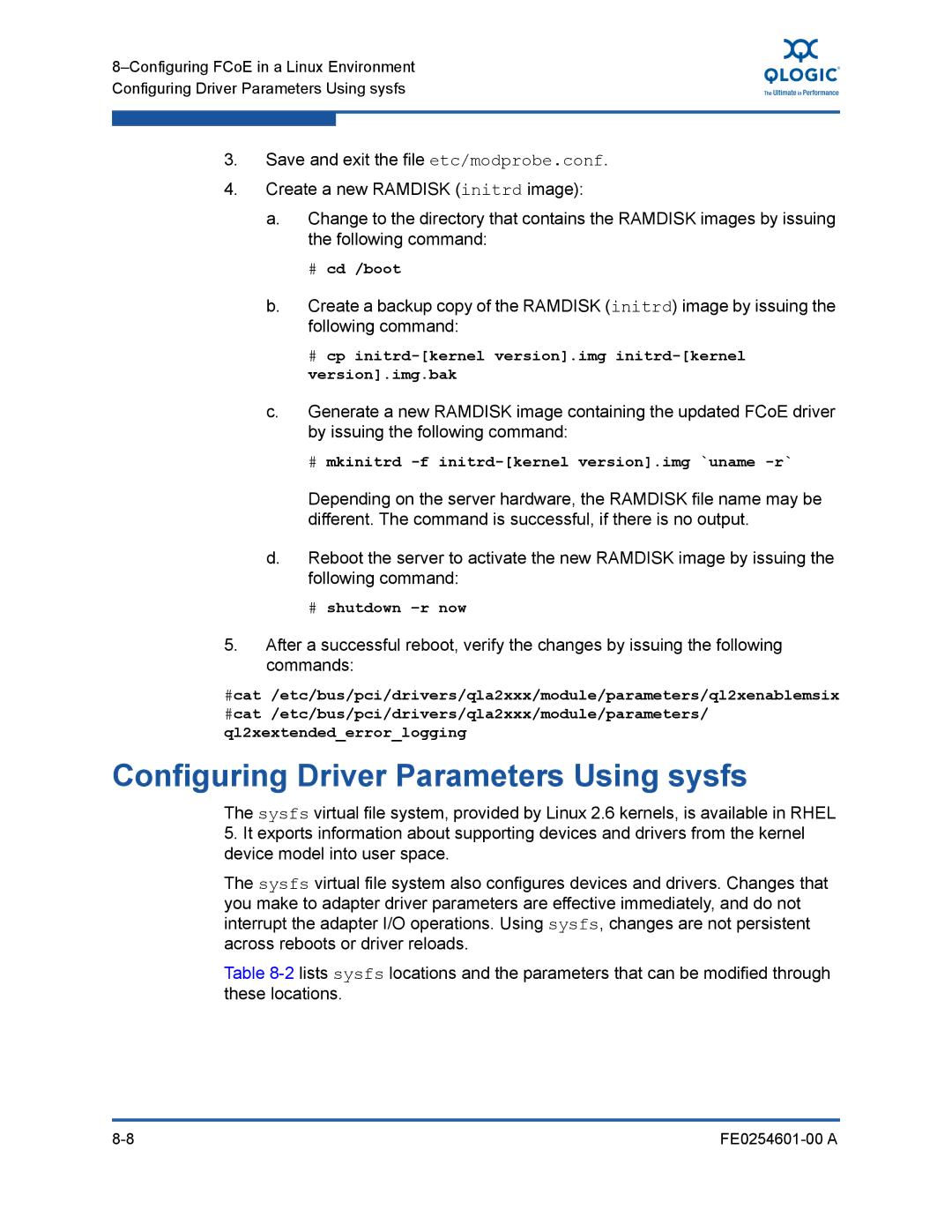
3.Save and exit the file etc/modprobe.conf.
4.Create a new RAMDISK (initrd image):
a.Change to the directory that contains the RAMDISK images by issuing the following command:
#cd /boot
b.Create a backup copy of the RAMDISK (initrd) image by issuing the following command:
#cp
c.Generate a new RAMDISK image containing the updated FCoE driver by issuing the following command:
#mkinitrd -f initrd-[kernel version].img `uname -r`
Depending on the server hardware, the RAMDISK file name may be different. The command is successful, if there is no output.
d.Reboot the server to activate the new RAMDISK image by issuing the following command:
# shutdown –r now
5.After a successful reboot, verify the changes by issuing the following commands:
#cat /etc/bus/pci/drivers/qla2xxx/module/parameters/ql2xenablemsix
#cat /etc/bus/pci/drivers/qla2xxx/module/parameters/ ql2xextended_error_logging
Configuring Driver Parameters Using sysfs
The sysfs virtual file system, provided by Linux 2.6 kernels, is available in RHEL
5.It exports information about supporting devices and drivers from the kernel device model into user space.
The sysfs virtual file system also configures devices and drivers. Changes that you make to adapter driver parameters are effective immediately, and do not interrupt the adapter I/O operations. Using sysfs, changes are not persistent across reboots or driver reloads.
Table
|
